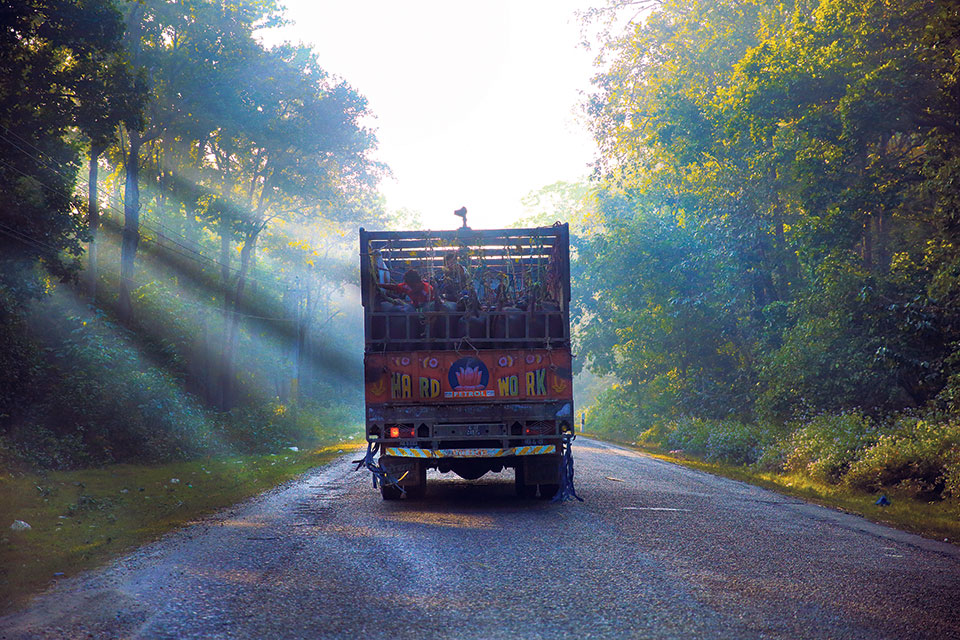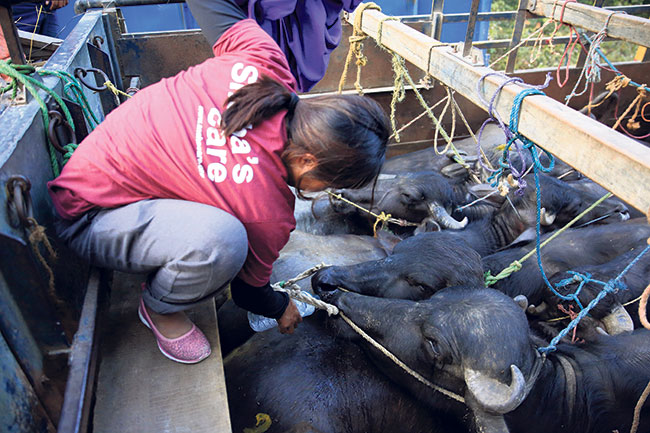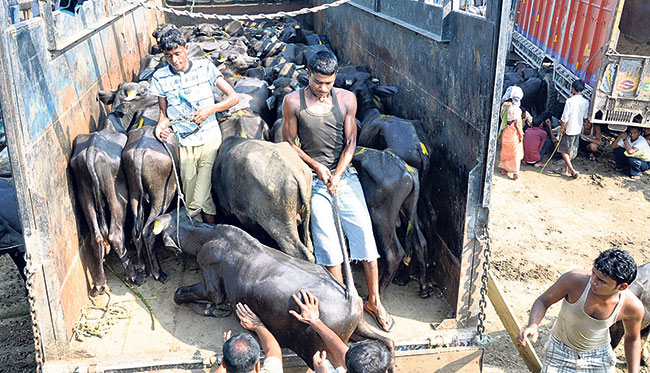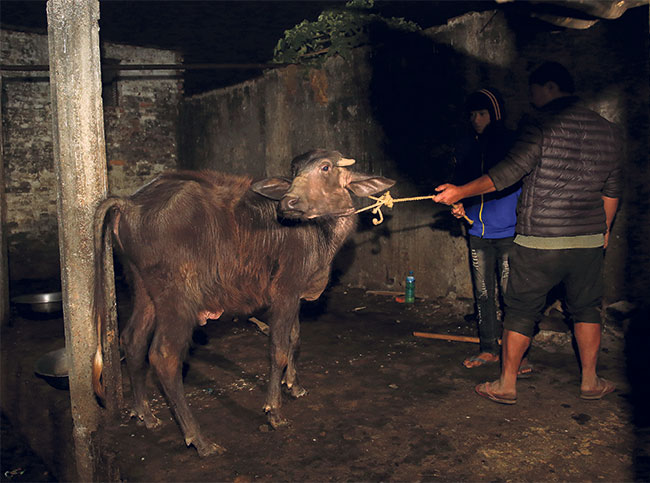CEO of Miss World Julia Morley talks about her COVID-19 speculation
4 years ago
_20200311200327_20200312135245.jpg)
4 years ago

4 years ago

4 years ago

KATHMANDU, May 30: Innumerable live stocks enter Kathmandu violating the regulated guidelines of the government. While animal transportation is mostly inhumane, the level of cruelty is notched up while transporting live buffaloes. India is the main supplier of buffalos. A truck, full of buffaloes making way to Kathmandu takes at least 22 - 24 hours.
The miseries in the eyes of these animals reflect the tales of the painful travel in a cramped captivity. The tails and noses are tied onto the vehicle’s hood with a sturdy cord to limit their moving space. Moreover, not a single drop of water is provided to the buffaloes throughout the journey.
According to Animal Transportation Standards 2007, while transporting animals, if animals suffer from stress, suffocation, bruising, heart stroke, haste, sunburn, bloating, poisoning, predation, dehydration, exhaustion, injury, pain, fight and break down of organs, then it shall be deemed careless treatment with the animal.
The standards further state that the transporters should allot a minimum of 0.84 square meters of area per buffalo while transporting. A single truck, therefore, cannot carry more than 15 buffaloes. However, buffalo transporters in Nepal have been violating the set protocol.
We spoke to Dr Pradip Bhattarai -- Information officer of Ministry of Agriculture, Land Management and Cooperative -- about the cruelty while handling and transporting live buffaloes. Agreeing to the inhumane treatment, he replied, “Though there are rules that should be followed during live transportation, animal cruelty has not been criminalized yet. So, we don’t have the authority to punish those who violate the rules. However, we are working to introduce Animal Welfare Act in Nepal which will advocate in favor of animal rights across the country.”
The data of Central Animal Quarantine Office showed that 61,582 numbers of buffaloes were imported in the 2073-74 fiscal year. The situation isn’t any better this year either. Up until May of the current fiscal year, more than 51,600 buffaloes have already been imported. One can only wonder why these animals are not transported in a more humane way.
We approached Uttam Kafle -- Animal welfare activist and Executive Director of Animal Nepal—to find out what is being done to minimize the mishandling and brutality while transporting these animals. He replied, “Live transportation of animal is painful for the animal. Animal Nepal is working to ban the transportation of live animals. Preference of fresh meat by the consumers and the violation of transportation criteria of government by the transportation contractors are the main reasons for brutal transportation of animals in Nepal.” He further added,“I think we can eradicate this unusual trend by banning live transportation and by promoting a scientific slaughter of animals and consumptions of frozen meets across the country.”
Animal right activist and founder of Sneha’s Care, Sneha Shrestha, expressed, “As I had noticed the poor condition of buffaloes while transportation, I decided to observe their journey from the starting point. When I tried shooting the situation, people tried to stop me from documenting the procedure. In my third attempt, I pretended that I was making a film on it, and then I was granted access to shoot the journey.” Sharing her experience, she stated, “It took almost 23 hours for us to reach the capital. The situation was extremely brutal as the cattleman sitting on the back of the truck was hitting the buffaloes with batons when they were trying to sit due to pain.”
She added, “I have sent a letter and the videos to the concern authorities to aware them of the situation these voiceless creatures are suffering from. However, if they still don’t pay attention to animal cruelty, we are considering of continuously voicing our concerns for their rights.” Shresha embarked on a journey to investigate the condition of animal transportation from the Nepal-India border to Kathmandu.
She was disappointed with the poor conditions of the animals while investigating the situation the live transportation of the animals. She explained, “Live transportation of buffaloes is banned in India. Local farmers bring their buffaloes to the border on foot, which are later loaded onto the truck with their heads and tails tethered to the top of the truck.”
Shrestha expressed grief over the improper implementation of the rules despite the presence of a progressive regulation geared towards the protection of animal rights. “During my investigation, we didn’t see any doctors checking the health conditions of the animals. So this question has been frequently hitting me; are meat eaters of the valley eating quality meat?”
Samir rai, chef at Jhanghat Restaurant of Sundhara said he feels for the inhumane behavior towards the animals. However, the demand for buff items is extremely high. Buff delicacies are the topmost preferences of the clients. “It would be good if government manage to promote systematic slaughterhouses in Nepal,” Rai said.




Leave A Comment